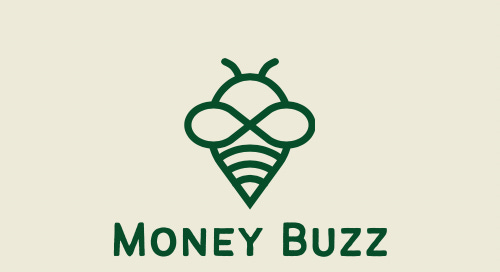Short Introduction
Robinhood continues to be surrounded by controversy, whether it be from its users or from the Securities and Exchange Commission. Amidst all of this, it is important to consider what is Robinhood's future?
January 27th - 28th, 2021
At this time last year, the “meme stock” mania took over news headlines and retail investors piled their money into Robinhood. GameStop’s stock price reached an all-time high at $325 on January 27th, but the glory did not last long. Vlad Tenev, Robinhood’s co-founder, restricted trading on GameStop, Blackberry, AMC, and Koss on January 28th. He made the decision as the National Securities Clearing Corporation (NSCC) wanted Robinhood to put up $3 billion to ensure that all buy orders could “clear” the next day (Cabral and LaCombe). The purpose of a clearinghouse is to ensure that the buyer commits to trade settlement obligations. This $3 billion vastly exceeded Robinhood’s liquidity, so Tenev only could make one decision, which was to restrict trading on these stocks. Robinhood’s decision led to outrage among its users as they were unable to buy “meme stocks” during a pivotal and volatile time.
July 29th, 2021
Robinhood experienced impressive growth over 2021, and the executives thought they should take advantage of it. Through quarter three of 2021, the company grew its customer base to 22.4 million users (Statista). Robinhood reported this financial result a couple of months after going public. With these internal metrics in mind, Robinhood (Ticker: HOOD) decided to go public at $38 per share on July 29th. With becoming a publicly-traded company, users of the app could then purchase Robinhood puts on the Robinhood platform. This seems like an absurd conflict of interest as it entails betting against the company where you have your money invested in.
Especially with Robinhood losing the faith of many traders during the GameStop debacle, they put a target on their back. During this time, management needed to also deal with lawsuits and a Securities and Exchange Commission (SEC) investigation from the events in January. Additionally, Robinhood has a history of “failing to satisfy duty of best execution” as the SEC penalized them $65 million back in 2020. However, this just begins the laundry list of Robinhood’s challenges. Many core issues were not addressed by the company, which inevitably led many customers to change their brokerage (FYI there is a $75 charge to transfer stocks out of Robinhood to another brokerage). Simply “put” (no pun intended), they did not seem ready to become publicly traded because of their flawed business model.
January 27th, 2022
Robinhood posted their quarter-four results for 2021 last week and they missed analyst expectations. They beat revenue projections for the quarter, but missed on their adjusted earnings per share (EPS) and cryptocurrency trading revenue estimates. Most of the company’s revenues are generated from payment for order flow (PFOF), which is a controversial practice. PFOF incentivizes brokers “to route customer orders to places that maximize PFOF rather than to the place that would get the customer the best execution” (Mccrank). Given that Robinhood has commission-free trading, it prompts investors to trade more. In the end, this allows the company to capture more profits from PFOF. Even though that PFOF is not a new concept, the SEC may regulate it in the future since it is in the “spotlight”.
Robinhood's Future
The short-term and long-term potential of Robinhood is scary. Their quarter-four presentation showcases that active users and average revenue per user slumped. The peak of Robinhood’s popularity occurred during quarter two of 2021, which is attributed to the meme stock mania and stimulus checks. Since then, the company seems to be losing its customer base. Robinhood lost a lot of trust with customers within one year because management fails to prioritize them. Many retail investors continue to move away from Robinhood because the company has and never will be fighting for their customer’s best interests. Robinhood has a lot of problems to figure out fast or they will continue to shed their market value. A reminder that their stock went public at $38, and it now sits at around $14.
Last Post:
"A Moment in History: The Austrian Banking Crisis of 1931"
Sources:
Ephrat Livni: https://www.nytimes.com/2022/01/27/business/robinhood-meme-stocks.html
Investopedia: https://www.investopedia.com/terms/p/paymentoforderflow.asp
John Mccrank: https://www.reuters.com/business/finance/robinhood-makes-most-its-money-pfof-what-is-it-2021-07-29/
Maggie Fitzgerald: https://www.cnbc.com/2022/01/27/robinhood-shares-tumble-9percent-after-first-quarter-revenue-forecast-is-well-below-estimates.html and https://www.cnbc.com/2022/01/27/robinhood-wants-to-make-stock-trading-available-more-hours-of-the-day-with-hyper-extended-hours.html
Robinhood: https://s28.q4cdn.com/948876185/files/doc_financials/2021/q4/Q4-2021-Earnings-Presentation_FINAL-for-filing.pdf and https://s28.q4cdn.com/948876185/files/doc_financials/2021/q4/Robinhood-Exhibit-99.1_12.31.2021_FINAL-for-filing-(1).pdf
Sarah Cabral and Amy LaCombe: https://www.scu.edu/ethics/focus-areas/business-ethics/resources/robinhood-reddit-and-gamestop-what-happened-and-what-should-happen-next/








